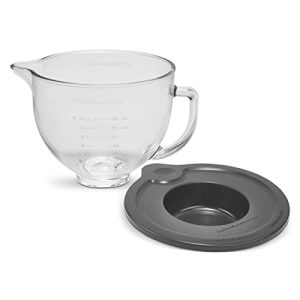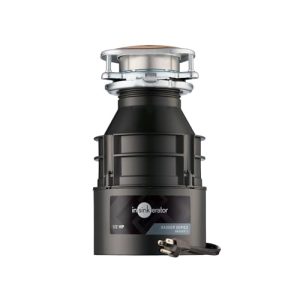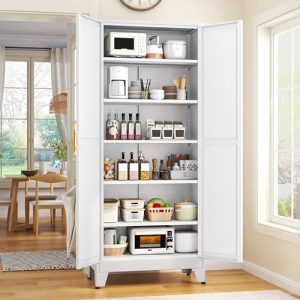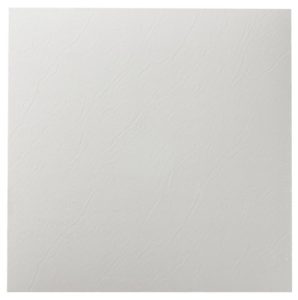Are you noticing leaks or clogs around your kitchen sink basket? Replacing it might be easier than you think.
Your kitchen sink basket plays a key role in keeping your sink drain clear and functioning smoothly. If it’s damaged or worn out, it can cause frustrating problems like slow drainage or unpleasant odors. You’ll discover simple steps to replace your kitchen sink basket quickly and confidently.
By the end, you’ll have a fresh, fully working sink ready to handle all your kitchen tasks. Keep reading to learn how to save time and avoid costly repairs with this easy fix!
Tools And Materials Needed
Replacing a kitchen sink basket needs specific tools and materials. Having everything ready makes the job easier and faster. Use quality tools for a smooth process and a lasting result.
Essential Tools For Replacing A Kitchen Sink Basket
- Adjustable wrench for loosening nuts
- Screwdriver to remove screws
- Plumber’s putty to seal the basket
- Pliers to grip small parts
- Bucket to catch any water spills
- Cleaning cloth for wiping surfaces
Materials Required For The Replacement
- New kitchen sink basket drain
- Plumber’s putty or silicone sealant
- Replacement rubber gasket or washer
- Pipe tape for secure connections
- Optional: Cleaning brush for sink drain
Preparation Tips Before Starting
- Turn off the water supply under the sink
- Clear the area under the sink for easy access
- Place a bucket beneath the drain to catch water
- Wear gloves to protect your hands
- Keep all removed parts organized for reassembly
Preparing The Workspace
Preparing your workspace is a crucial part of replacing your kitchen sink basket. Taking the time to organize and secure your area can save you from unexpected hassles and make the process smoother. It also helps prevent accidental water damage and keeps your tools easily accessible.
Turn Off Water Supply
Before you touch anything under the sink, make sure to turn off the water supply. Look for the shut-off valves located beneath the sink—usually one for hot water and one for cold water. Turning these valves clockwise will stop water flow and prevent leaks while you work.
If you can’t find the local valves, consider shutting off the main water supply to your home. This extra step ensures safety but remember to test the faucet afterward to confirm the water is off. Have a towel handy just in case some water drips out when you disconnect the pipes.
Clear The Area Under The Sink
Emptying the cabinet under your sink gives you room to work and protects your belongings. Remove cleaning supplies, trash bins, or any stored items that might get in the way or damaged. A clutter-free zone means you can focus fully on the task without distractions.
Also, clean the cabinet floor and walls if necessary. This can prevent dirt and grime from contaminating your new sink basket or tools. Imagine how much easier your job will be with clear space and a clean environment.
Removing The Old Basket
Removing the old kitchen sink basket is the first key step in replacing it. This process involves careful detachment of connected parts to avoid damage. Each task requires attention and the right tools to make it smooth and safe.
Disconnect Drain Pipes
Start by turning off the water supply. Place a bucket under the sink to catch any water. Use a wrench to loosen the slip nuts on the drain pipes. Gently pull the pipes away from the sink drain. Keep the pipes and connectors in a safe place for reuse or replacement.
Loosen Basket Locknut
Locate the basket locknut under the sink. This nut secures the sink basket in place. Use a basin wrench or adjustable wrench to turn the locknut counterclockwise. If it is tight, apply some penetrating oil and wait a few minutes. Carefully loosen the locknut until it can be removed by hand.
Extract Old Basket
Push the old basket from above the sink. Wiggle it gently to break the seal of plumber’s putty or silicone. Lift the basket out carefully to avoid scratching the sink surface. Clean the sink drain area before installing the new basket. Remove any old putty or debris for a proper fit.
Cleaning The Sink Drain
Cleaning the sink drain is a key step in replacing your kitchen sink basket. A clean drain ensures smooth water flow and prevents bad odors. Dirt, grease, and food bits often clog the drain, causing slow drainage. Regular cleaning keeps your sink fresh and working well.
Remove Debris From The Drain Opening
Start by clearing visible debris from the drain opening. Use gloves to pull out food scraps and gunk. A small brush or cloth helps to wipe away sticky residue. This makes the next cleaning steps more effective.
Use Baking Soda And Vinegar
Pour half a cup of baking soda into the drain. Follow with half a cup of vinegar. Let the mixture fizz for 10 to 15 minutes. This natural reaction breaks down buildup inside the pipes.
Flush With Hot Water
Boil a pot of water. Carefully pour it down the drain after the baking soda and vinegar sit. Hot water clears loosened grime and refreshes the drain. Repeat if water still drains slowly.
Clean The Drain Basket And Surrounding Area
Remove the sink basket from the drain. Wash it with warm soapy water. Scrub away any stuck particles. Wipe the drain opening and edges. A clean basket fits better and lasts longer.
Installing The New Basket
Begin by removing the old basket and cleaning the sink area thoroughly. Fit the new basket into the drain hole, then tighten the locknut underneath to secure it firmly. Check for leaks by running water after installation.
Installing a new kitchen sink basket can seem daunting, but it’s surprisingly straightforward. Once you’ve removed the old basket, the next steps are crucial in ensuring a watertight seal and a snug fit for your new basket. Are you ready to get your hands a little dirty and give your kitchen sink a fresh start?Apply Plumber’s Putty
Start by rolling a small amount of plumber’s putty into a snake-like shape. This putty will create a watertight seal and prevent leaks. Press the putty around the underside of the new basket’s rim. Make sure it’s evenly distributed to avoid gaps.Position The New Basket
Gently place the new basket into the sink’s drain hole. Push it down firmly to seat it into the plumber’s putty. You’ll see excess putty squeezing out, which is perfectly normal. Wipe away the excess putty using a damp cloth. This ensures a clean finish and a solid seal.Secure Basket With Locknut
From underneath the sink, attach the rubber washer followed by the cardboard friction ring. Tighten the locknut onto the basket threads. This step is crucial as it holds the basket securely in place. Use adjustable pliers to ensure the locknut is tight. But be cautious not to overtighten, which could damage the sink. By taking these steps, you’re not just installing a new basket; you’re creating a more efficient kitchen experience. Have you ever noticed how even the simplest changes can make daily tasks feel brand new?Reconnecting Drain Pipes
Reconnecting the drain pipes after replacing your kitchen sink basket is essential to prevent leaks and ensure smooth water flow. This step requires careful alignment and secure fitting of pipes. Proper reconnection avoids water damage and maintains your kitchen’s functionality.
Start by inspecting all drain pipes and fittings for damage or wear. Replace any cracked or brittle parts before reconnecting. Clean the pipe ends and fittings to remove debris or old sealant, helping create a tight seal.
Aligning The Drain Pipes Correctly
Position the drain pipes so they line up with the sink’s basket outlet. Use gentle adjustments to avoid stressing the pipes. Proper alignment reduces the risk of leaks and improves drainage efficiency.
Securing Pipe Connections
Use plumber’s putty or silicone sealant around the pipe joints. Tighten slip nuts by hand first, then use a wrench to secure them firmly. Avoid overtightening, which can damage the pipes or fittings.
Checking For Leaks
Run water through the sink to test the connections. Look closely for drips or moisture around each joint. Tighten any loose fittings if you find leaks. Repeat the test until no leaks appear.
Using Proper Tools And Materials
- Adjustable wrench for tightening slip nuts
- Plumber’s putty or silicone sealant for sealing joints
- Bucket to catch any water during reconnection
- Clean cloth to wipe excess sealant or water
Testing For Leaks
Testing for leaks is a key step after replacing your kitchen sink basket. It confirms that the basket is sealed tightly and water flows properly. Catching leaks early protects your cabinets and floor from water damage.
Start with a careful visual check. Look around the basket and under the sink for any signs of moisture or drips. Even small drops can mean a leak is present.
Fill The Sink And Observe
Fill the sink with water to test the seal on the basket. Let the water sit for a few minutes. Watch closely under the sink for any water escaping from the basket area.
Run Water Through The Drain
Turn on the faucet and let water flow freely. Check the basket and drain pipes while water runs. This test reveals leaks that only appear under water pressure.
Use A Dry Tissue To Detect Moisture
Wipe around the basket and connections with a dry tissue or paper towel. The tissue will darken if it picks up moisture. This method helps find hidden leaks quickly.
Check All Connections And Seals
Inspect the rubber gasket, plumber’s putty, and lock nut securing the basket. Tighten any loose parts gently. Replace worn or damaged seals to stop leaks for good.
Tips For Maintenance
Start by turning off the water supply to avoid leaks. Carefully remove the old basket and clean the sink area before fitting the new one. Tighten all connections securely to prevent water damage.
Replacing your kitchen sink basket can save you from future headaches. Maintaining it properly ensures its longevity and efficiency. Here are some practical tips to keep your sink basket in top shape.Regular Cleaning
Clean the basket weekly to prevent build-up. Use warm water and mild soap. Scrub gently with a soft brush. Rinse thoroughly to remove soap residue.Avoid Harsh Chemicals
Harsh chemicals can damage the basket. Opt for natural cleaners. Vinegar and baking soda are great alternatives.Check For Leaks
Inspect the basket for leaks every month. Tighten any loose connections. Replace worn-out washers promptly.Use A Strainer
Place a strainer over the basket. It catches debris and prevents clogs. Clean the strainer regularly.Monitor Water Flow
Ensure water drains smoothly. If slow, check for clogs. Remove blockages immediately for optimal performance.Frequently Asked Questions
How Do I Remove The Old Kitchen Sink Basket?
First, turn off the water supply. Then, disconnect the drain pipes. Use pliers to unscrew the basket nut. Lift out the old basket carefully. Clean the sink drain area before installing the new basket.
What Tools Are Needed To Replace A Sink Basket?
You will need pliers, a screwdriver, plumber’s putty, and a wrench. Having a bucket for water spills is helpful. These tools ensure a smooth and safe basket replacement process.
How Do I Install A New Kitchen Sink Basket?
Apply plumber’s putty around the basket’s flange. Insert the basket into the drain hole. Tighten the basket nut securely from underneath. Reconnect the drain pipes and check for leaks by running water.
Can I Replace A Kitchen Sink Basket Myself?
Yes, with basic tools and instructions, most can replace it. It is a simple DIY task that saves money. Ensure you follow safety steps and shut off water supply first.
Conclusion
Replacing your kitchen sink basket is easier than it seems. Gather the right tools and take your time. Remove the old basket carefully to avoid damage. Fit the new basket tightly to stop leaks. Test the sink to ensure everything works well.
A little effort saves money and keeps your kitchen clean. Try this simple fix to improve your sink’s function today.

Sophie Hartwell is the founder of KitchenQuik.com, where she shares kitchen tips, smart cooking hacks, and the best product picks to make everyday cooking easier and more enjoyable.




